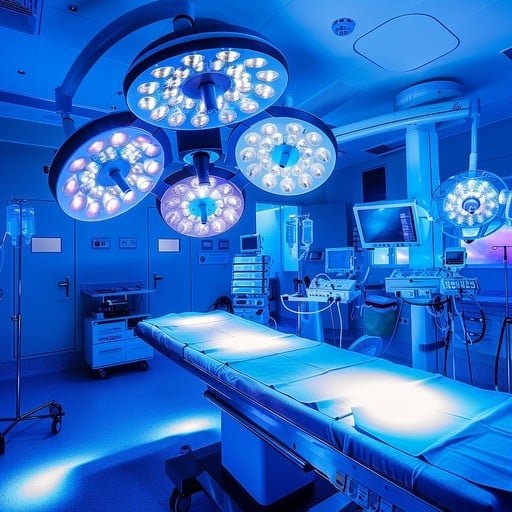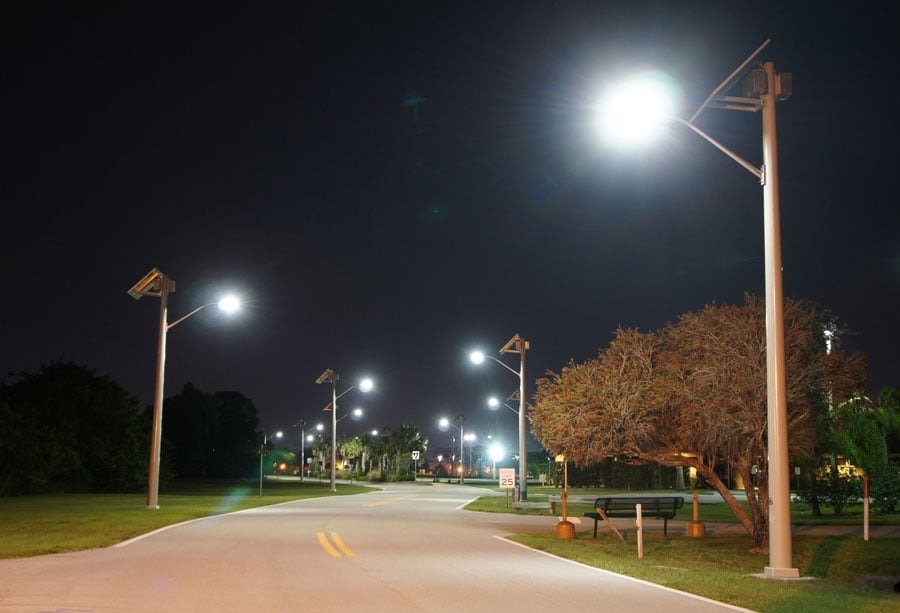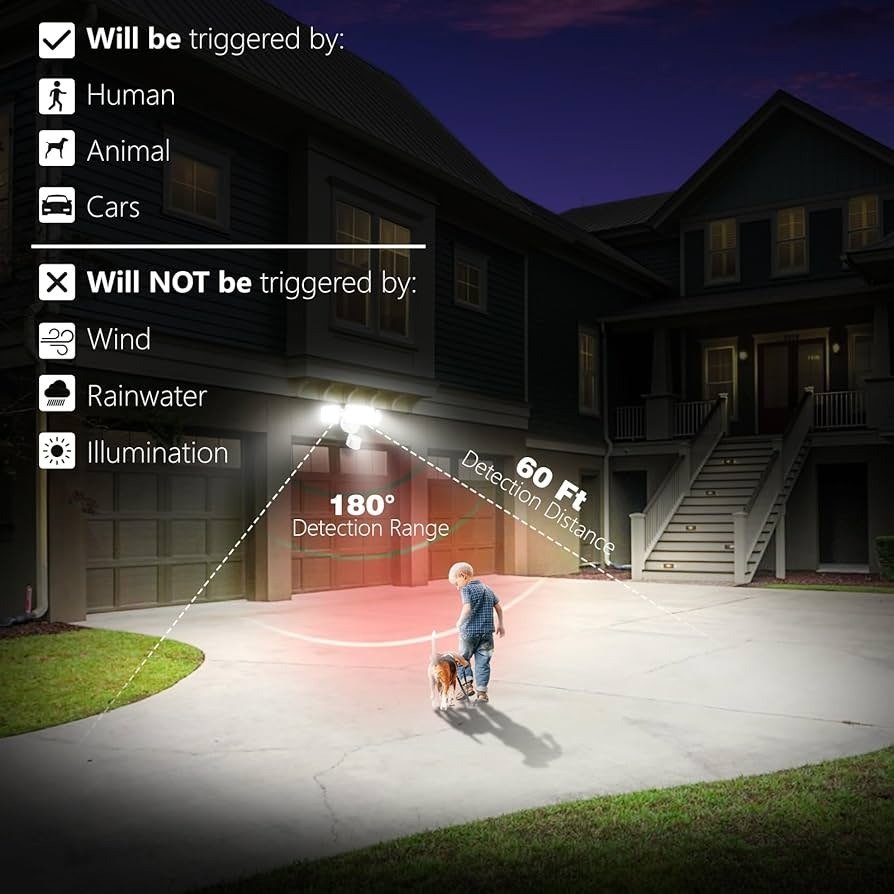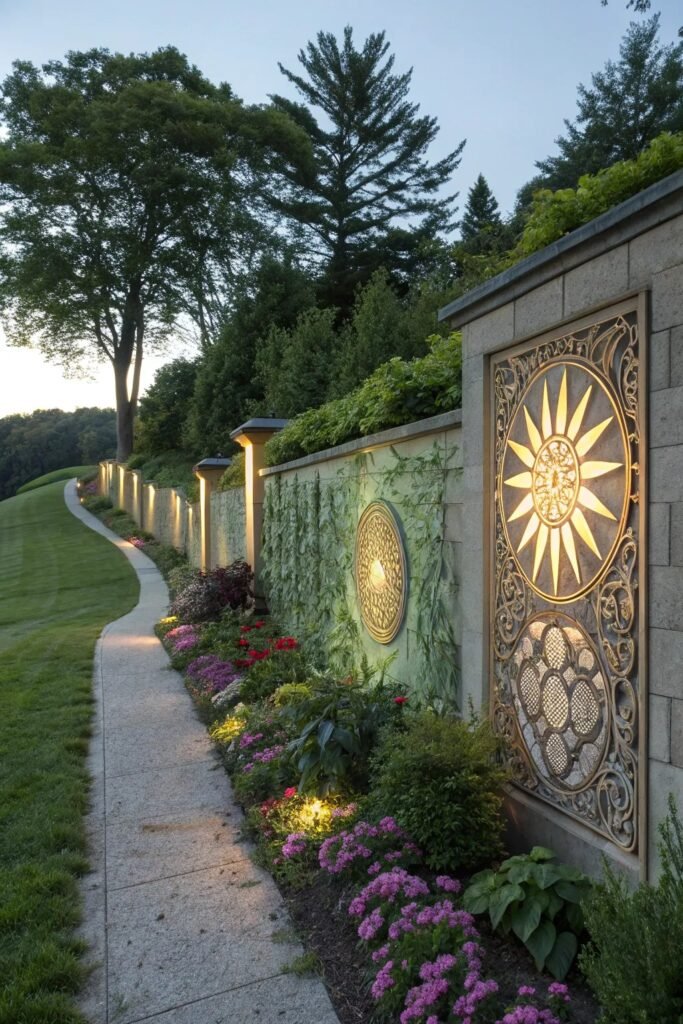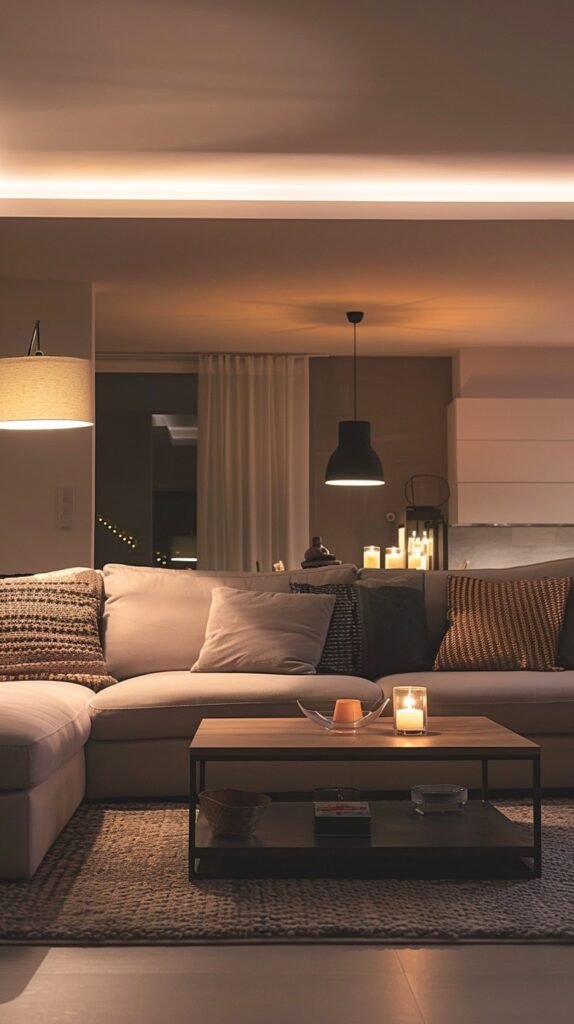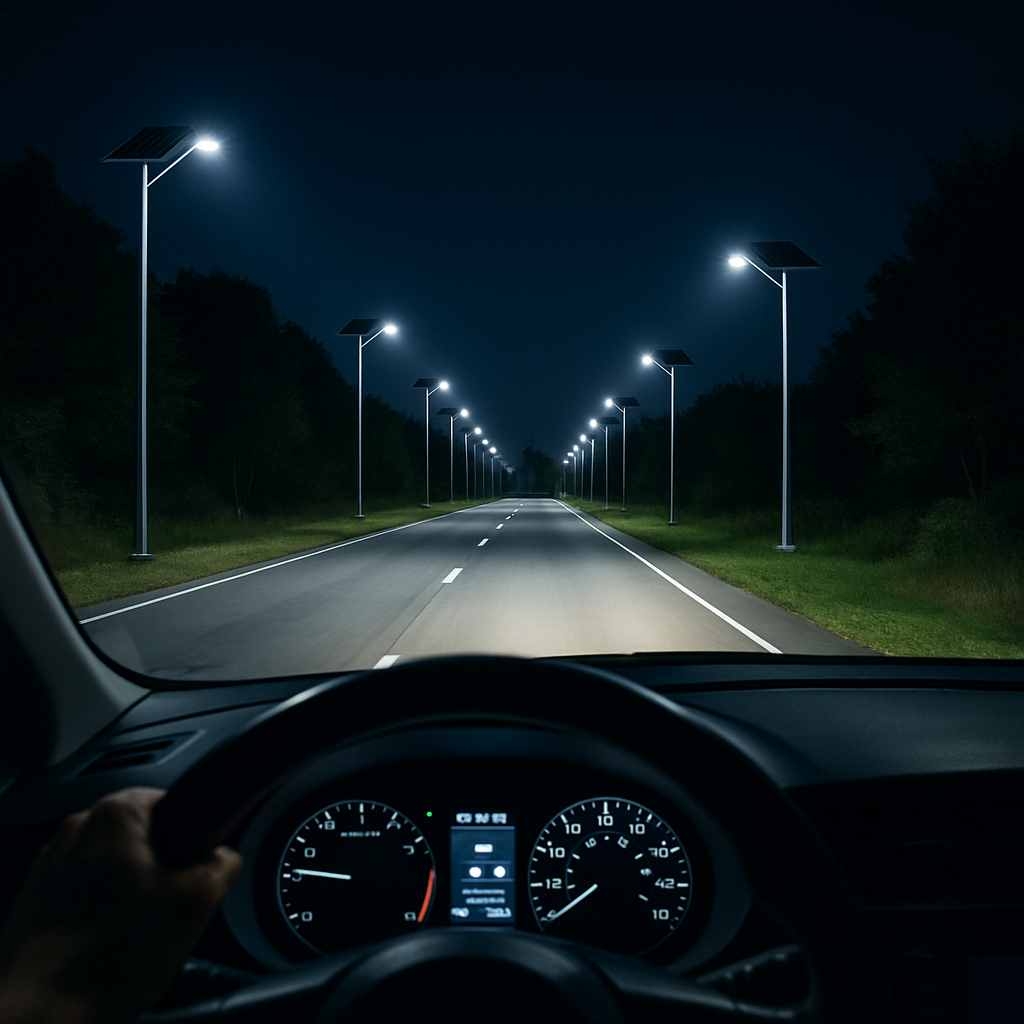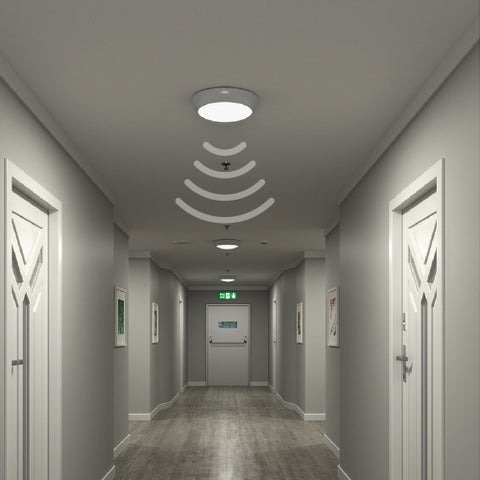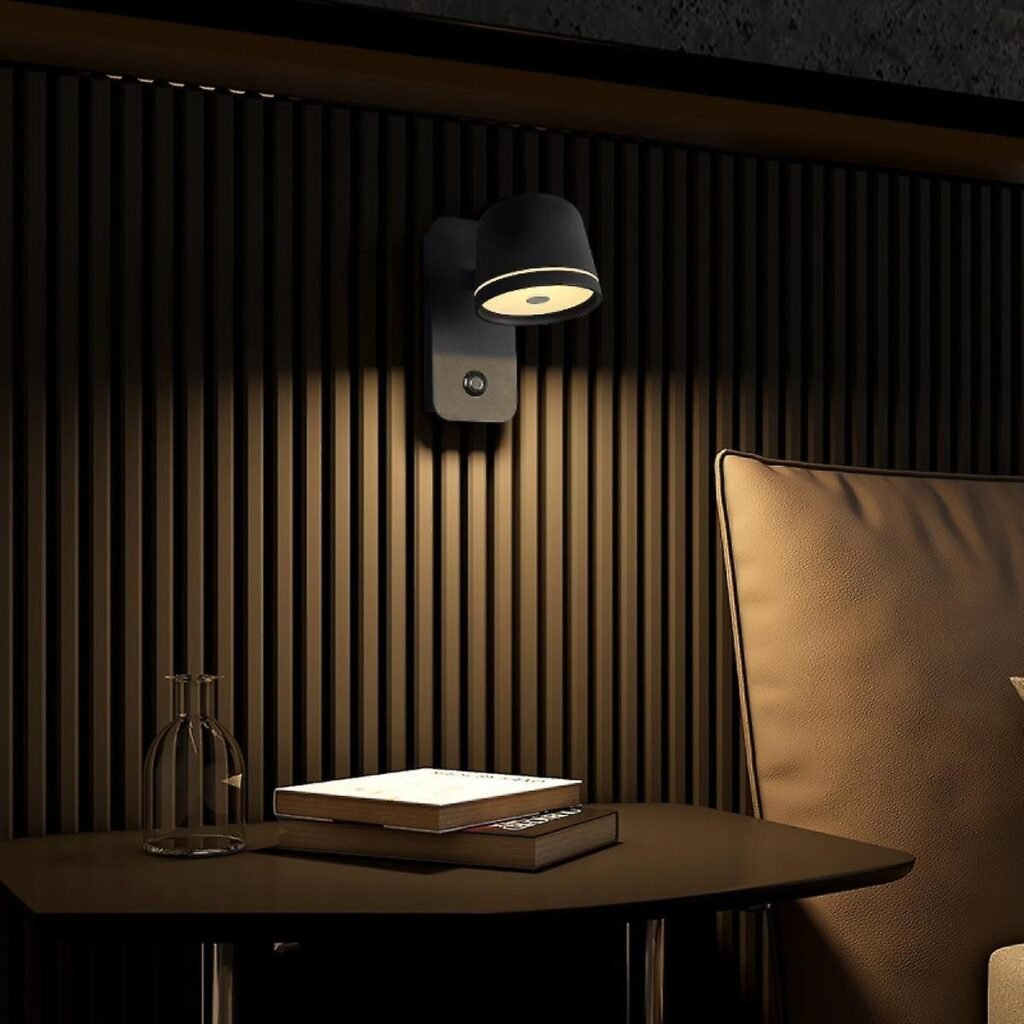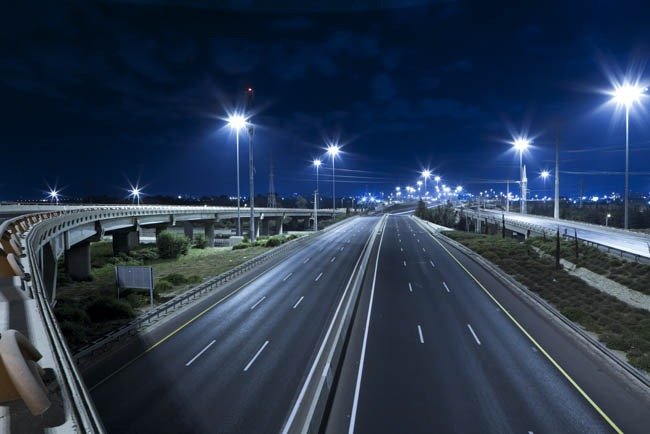Illuminating the Future: Why LED Lighting Matters
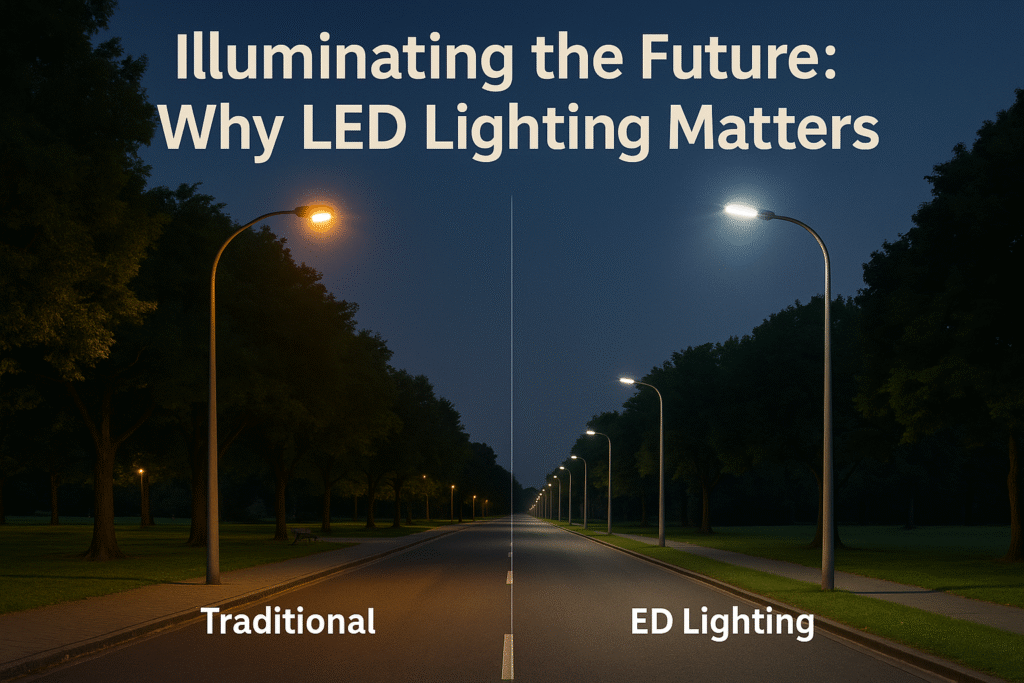
Public spaces—such as streets, parks, parking lots, and transport hubs—are vital parts of modern life. Ensuring these areas are well-lit improves safety, boosts accessibility, and reduces both energy consumption and operational costs. LED Lighting in Public Spaces has emerged as the leading solution for municipalities and organizations seeking efficiency, sustainability, and reliability. Unlike outdated fluorescent or halogen systems, LEDs deliver superior brightness, last longer, and consume far less energy, making them the ultimate future-ready choice.
Key Benefits of LED Lighting in Public Spaces
1. Energy Efficiency and Cost Savings
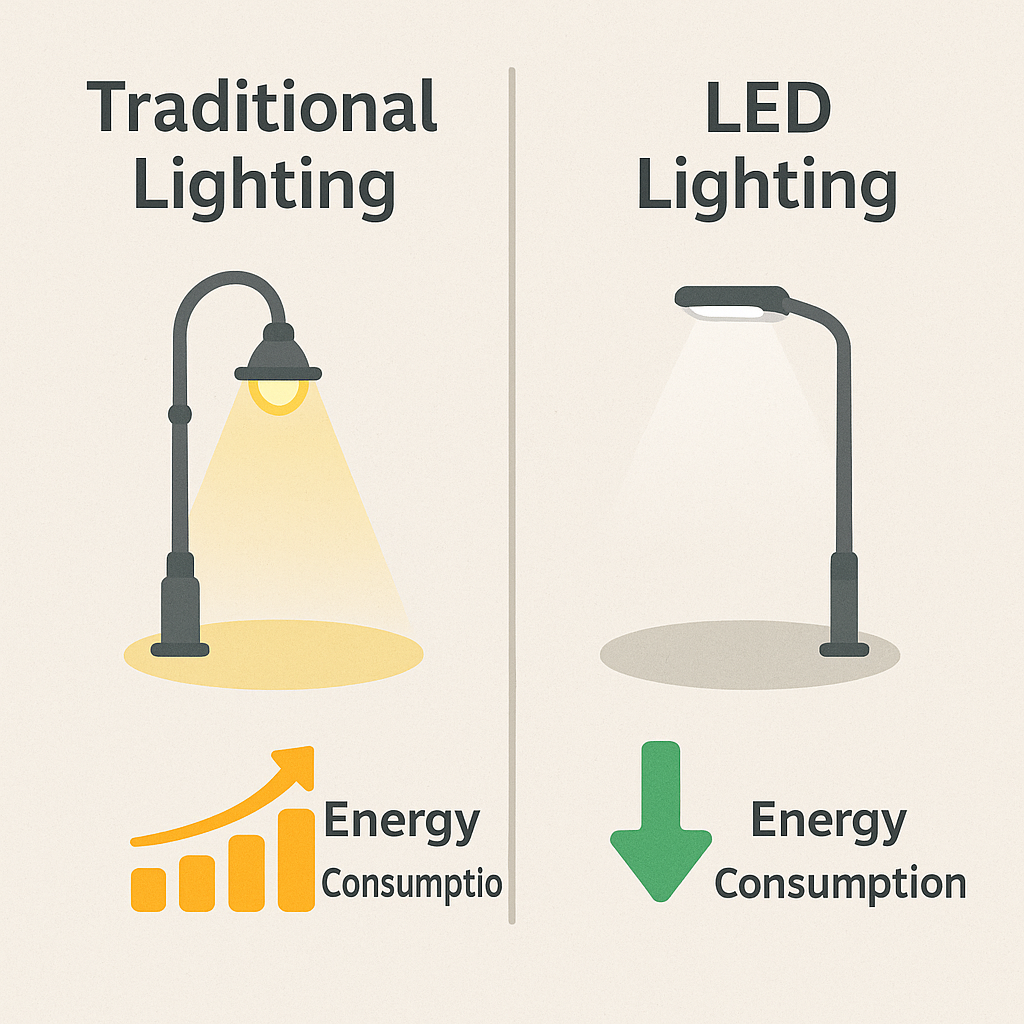
LEDs consume up to 70% less energy compared to traditional lighting systems. This directly reduces utility bills for cities, institutions, and commercial facilities. For example, retrofitting a major highway with LED Lighting in Public Spaces can save millions annually. Their longer lifespan—reaching up to 100,000 hours—further cuts maintenance costs, since replacements and servicing are required far less frequently.
2. Enhanced Safety and Visibility
Safety is one of the strongest arguments for upgrading. Brighter, natural LED light reduces accidents for drivers and pedestrians while deterring crime in dark areas. Surveillance cameras also capture clearer footage, improving law enforcement and urban security. Many cities now consider LED Lighting in Public Spaces a central pillar in their crime prevention strategies.
3. Sustainability and Lower Carbon Footprint
Switching to LEDs directly supports global climate goals. Because they use less electricity, LEDs significantly cut carbon emissions. Cities adopting LED Lighting in Public Spaces often report measurable improvements in their sustainability action plans, demonstrating the technology’s environmental impact.
Smart Strategies for Implementation
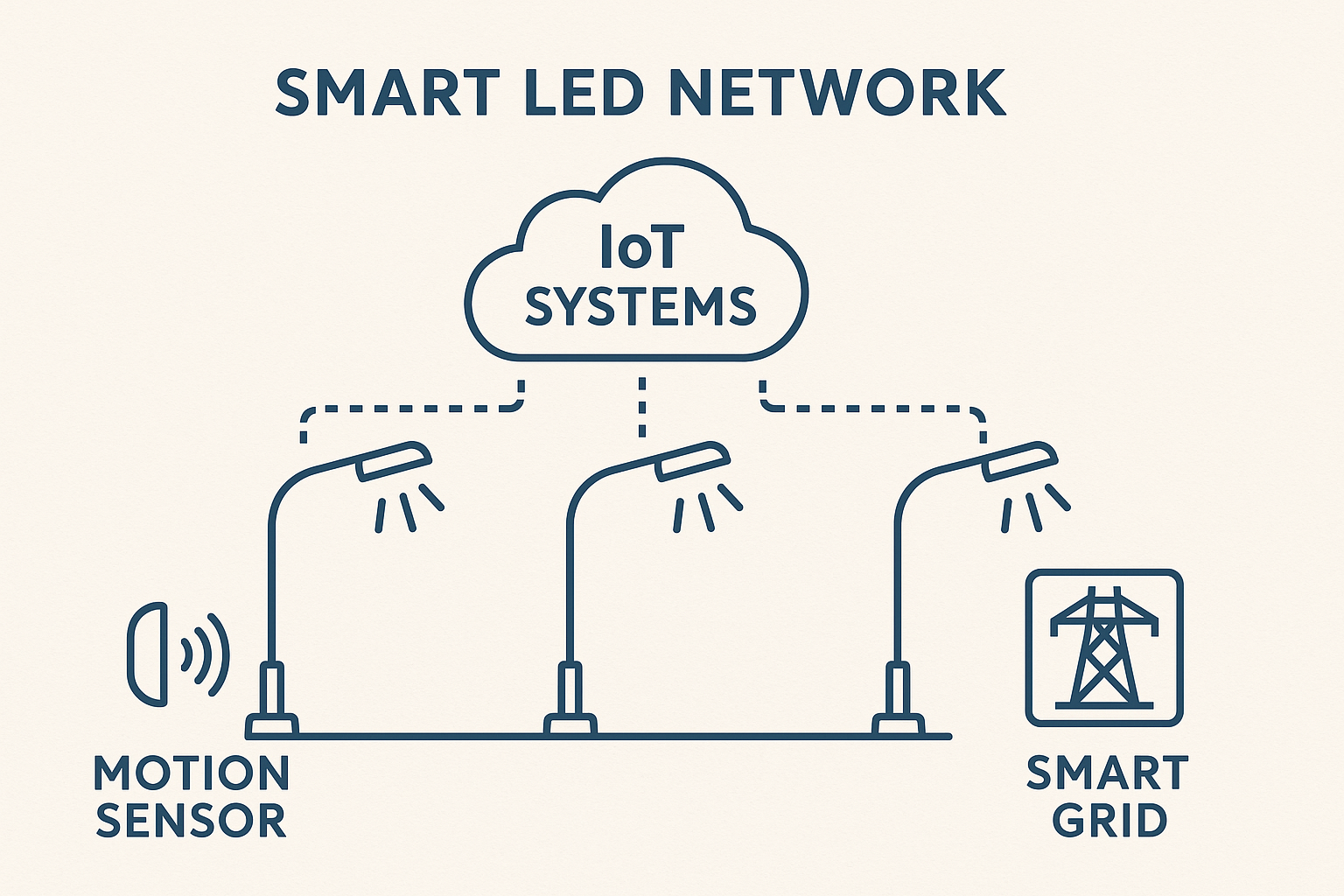
1. Conduct a Comprehensive Energy Audit
Before adopting LEDs, municipalities should evaluate their current infrastructure. An audit highlights the areas where retrofits will generate the largest savings and fastest ROI.
2. Prioritize High-Impact Areas
Focus initial rollouts on spaces with heavy traffic—highways, public transport hubs, and squares. These not only improve safety but maximize energy efficiency.
3. Integrate Smart Controls
Pairing LED Lighting in Public Spaces with dimmers, motion sensors, and timers optimizes efficiency. Lights can dim during low-traffic hours and brighten instantly when movement is detected.
4. Choose Durable, High-Quality Fixtures
Not all LEDs perform equally. Municipalities must invest in weatherproof, high-lumen fixtures designed for long-term outdoor use. Falcon’s range of LED streetlights, for example, combines durability with exceptional efficiency—ideal for sustainable urban development.
5. Engage the Public
Public awareness campaigns help communities understand and support LED initiatives. When citizens see the benefits—lower costs, safer neighborhoods, and greener cities—they are more likely to embrace the transition.
In-Depth Insights: Beyond the Basics
Smart City Integration
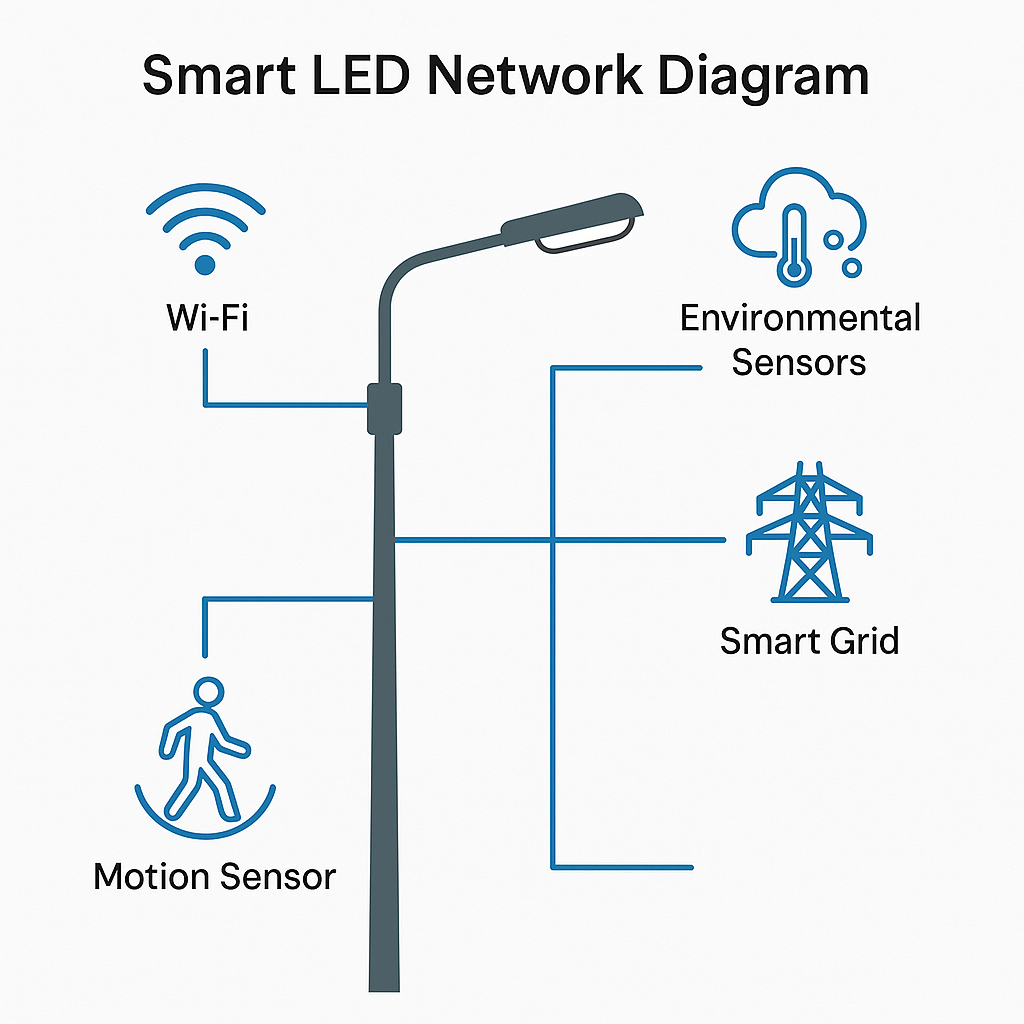
Modern LED Lighting in Public Spaces can integrate with smart city networks, supporting Wi-Fi, environmental sensors, and even EV charging stations. This turns lighting into a multifunctional urban asset rather than just a utility.
Lifecycle Cost Analysis
While upfront costs are higher, long-term savings make LEDs far more economical. Cities often achieve payback in just 3–5 years thanks to lower energy bills, minimal replacements, and reduced maintenance.
Global Case Study
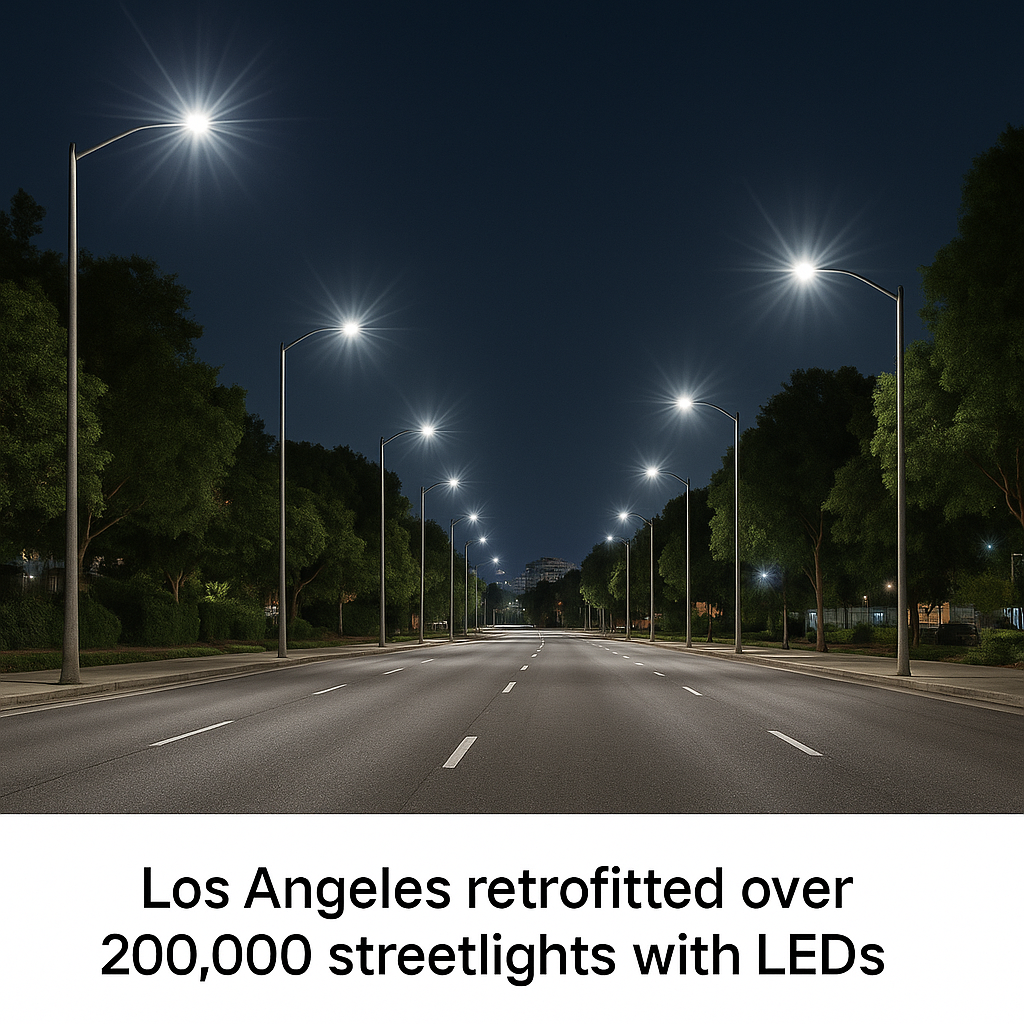
Los Angeles retrofitted over 200,000 streetlights with LEDs, cutting energy use by 63% and saving millions annually. Cities worldwide—from Paris to Cairo—are replicating this model, proving the scalability of LED Lighting in Public Spaces.
Visual Demonstrations
To illustrate the advantages, two diagrams accompany this article:
- Energy Savings Comparison Chart – showing how much electricity LEDs save compared to sodium or halogen lights.
- Smart LED Network Diagram – demonstrating how LEDs connect with IoT systems, motion sensors, and smart grids.
These visuals highlight that switching to LED Lighting in Public Spaces is not simply replacing bulbs—it’s a full transformation of urban infrastructure.
Challenges and Solutions
- Initial Costs: Green financing, government grants, or phased rollouts can ease budget pressure.
- Technical Expertise: Partnering with experienced providers like Falcon ensures correct installation and optimized performance.
- Maintenance Skills: Training staff in smart controls and IoT integration maximizes system benefits.
Expert Recommendations for Cities
- Always prioritize quality over quantity—cheaper fixtures reduce long-term gains.
- Combine LEDs with renewable energy like solar for maximum impact.
- Ensure compliance with urban lighting regulations to balance safety, brightness, and efficiency.
Lighting the Way Forward
Adopting LED Lighting in Public Spaces is more than just a cost-saving measure—it’s a smart, future-ready investment. LEDs help cities cut emissions, reduce costs, and create safer, greener, and more innovative environments. With careful planning and the right partnerships, municipalities can transform public lighting into a cornerstone of smart urban living.
The Falcon Advantage
Falcon Group delivers advanced LED solutions customized for public spaces. From retrofits to smart system designs, Falcon guarantees quality, efficiency, and innovation.
🌐 Visit us: https://falcontgroup.com/
📞 Call us: 01001458515
Frequently Asked Questions About LED Lighting in Public Spaces
Why are LEDs better than traditional streetlights?
LEDs last up to ten times longer than sodium lamps and consume far less energy. Their brighter, more natural light improves visibility and enhances safety.
Can LEDs be powered by solar energy?
Yes. Solar-powered LED streetlights are increasingly common in sunny regions. They reduce reliance on the grid and cut electricity bills to zero.
How long do LED streetlights last?
High-quality LEDs can last 50,000–100,000 hours—more than a decade of use with minimal maintenance.
Are LEDs effective in extreme climates?
Absolutely. With the right fixtures, LED Lighting in Public Spaces withstands extreme heat, freezing cold, heavy rain, and high humidity.
What makes LEDs suitable for smart cities?
They can integrate with IoT networks, supporting features like adaptive brightness, traffic monitoring, and even environmental sensors.
Sources and References
- U.S. Department of Energy – Energy Savings with LED Lighting
- International Energy Agency (IEA) – Efficient Lighting and Urban Energy Use
- Smart Cities World – How LED Lighting Powers Smart City Infrastructure
- Falcon Group – LED Lighting Solutions for Public Spaces

